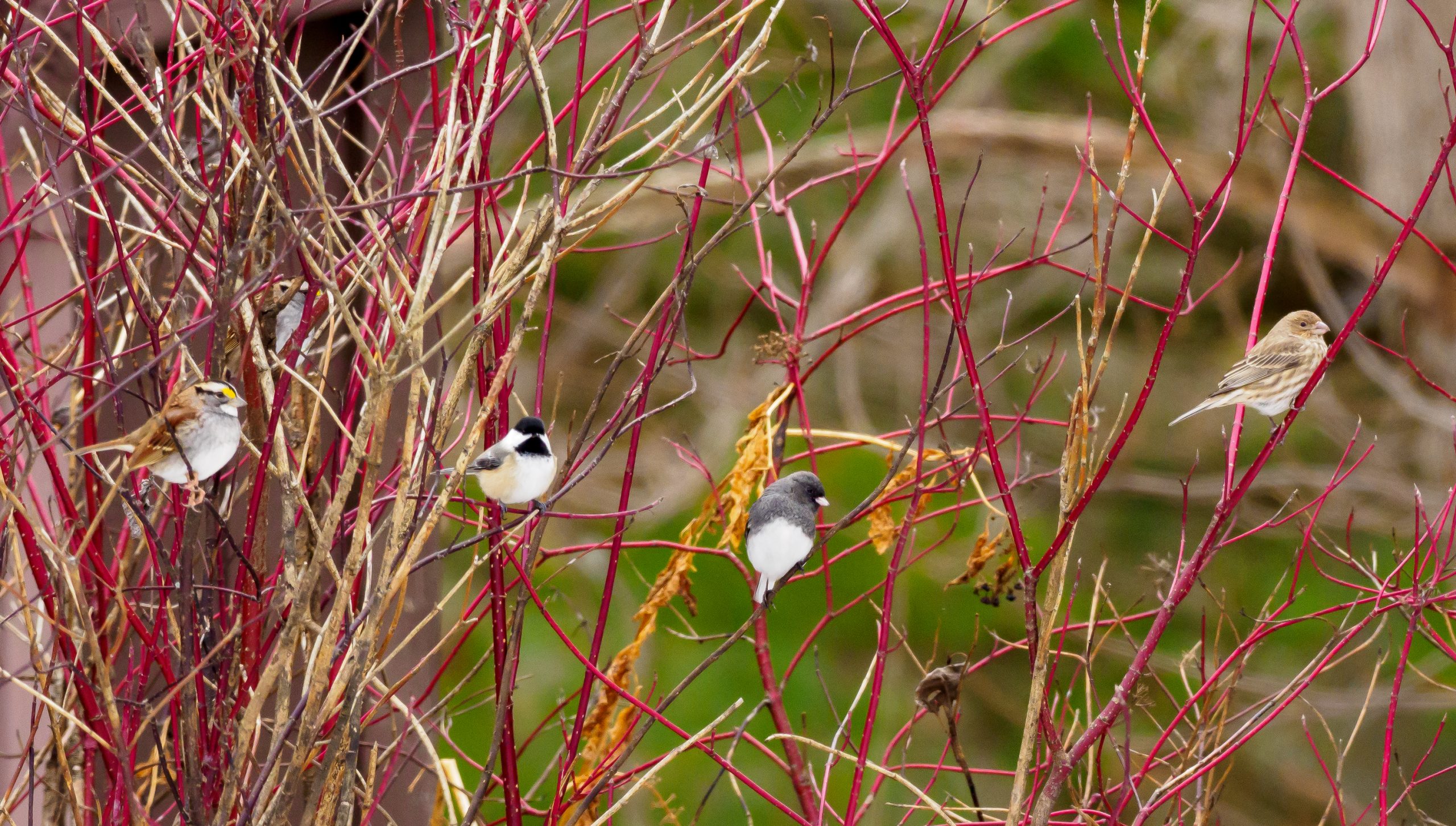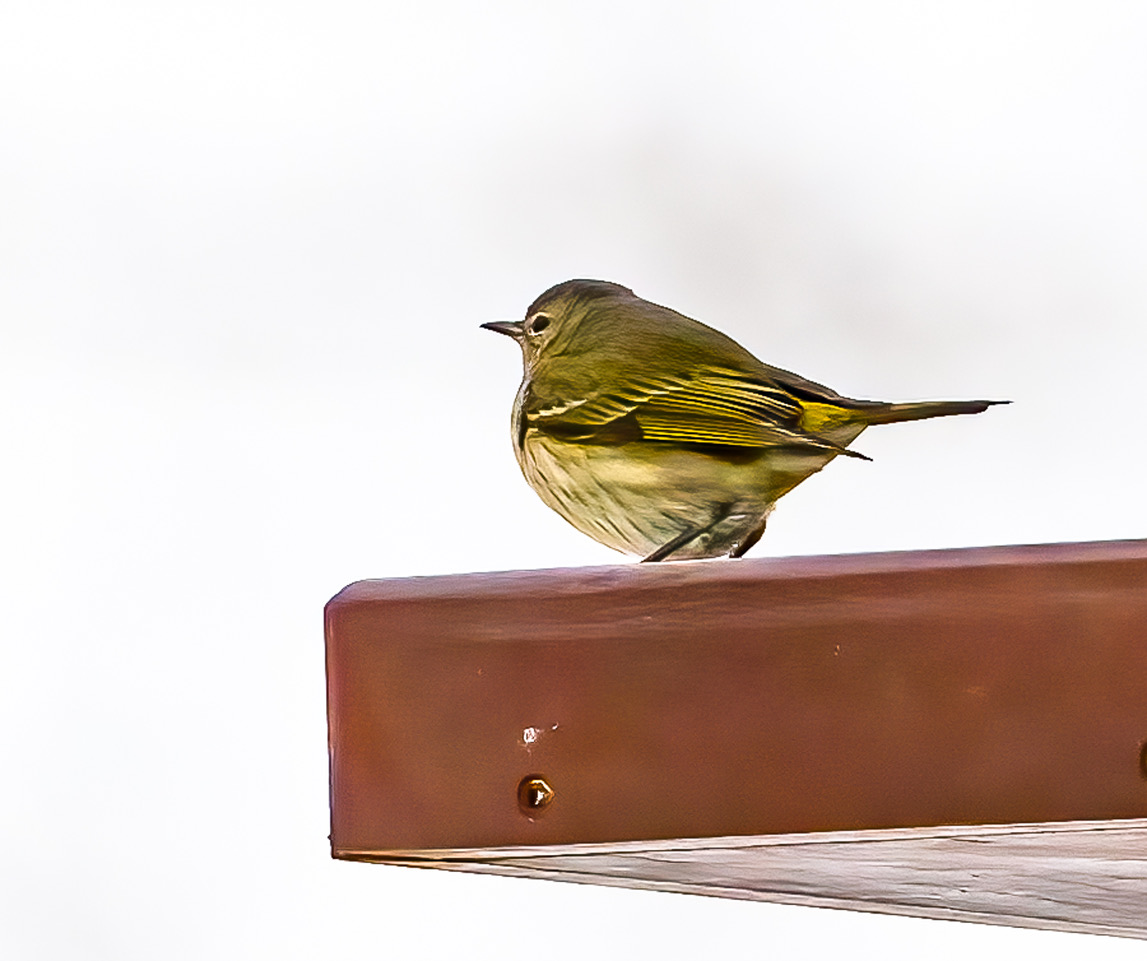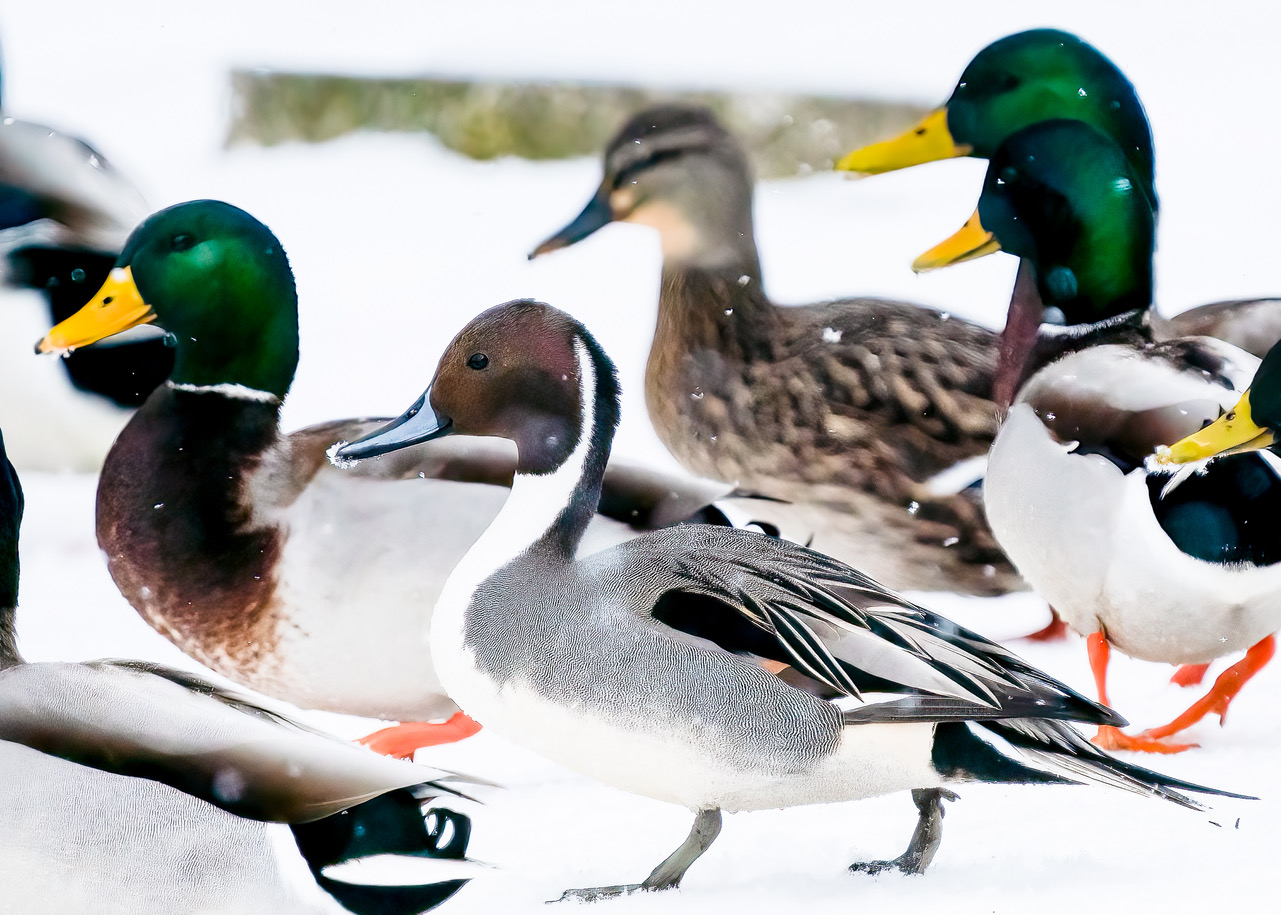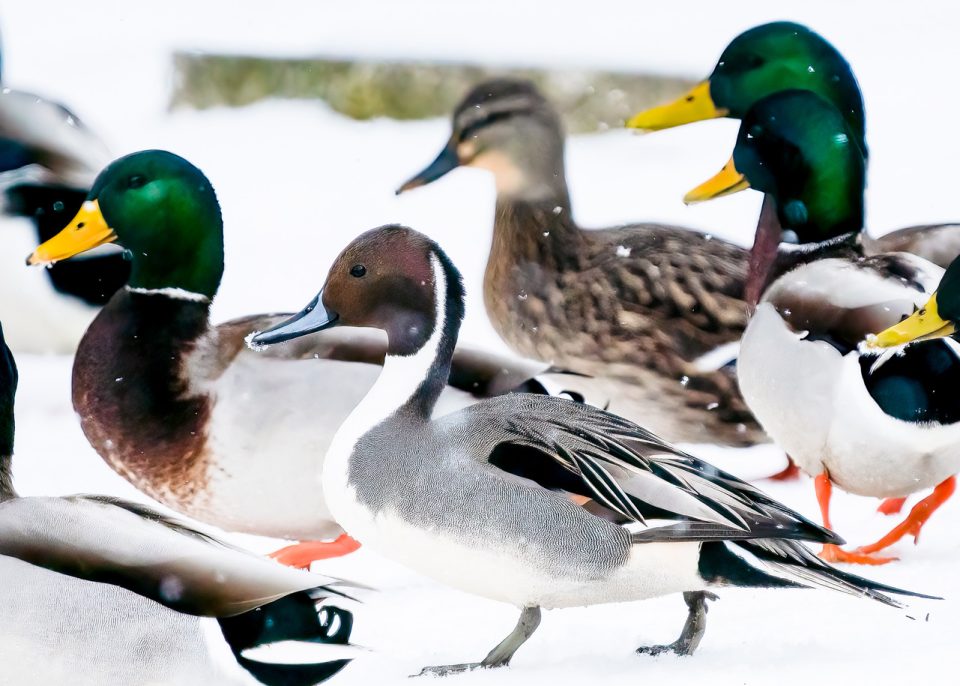December 28, 1969: ‘Twas a clear day, low of 22, high of 31. Eight intrepid souls, led by the late John Orr, ventured into the woods and fields of Sinking Valley for the first ever Christmas Bird Count in the recently established Culp circle. After 24 hours of team effort, the counters tallied 32 species. That year was the 70th annual CBC nationwide; it would take the Culp count all the way to year #123, on December 17, 2022, to reach 72 species. Along the way, effort, species numbers, and weather have had their ups and downs, but enthusiasm has never flagged. In celebration of surpassing the long-sought 70-species goal, we present a brief history of the Culp Count.
My family, up in Plummer’s Hollow, first got involved in CBC #79, in 1978. I was nine years old. Since then, I participate every year I am in town. In my family, it is safe to say, Christmas Bird Count is bigger than Christmas!
In those early years, the count supper, as we called it, was strictly potluck, at the old Sinking Valley Grange. Before the age of the Internet, we would straggle in oblivious to each other’s finds. Indeed, half the fun was the unveiling of the best species during the tally after every count supper. If you had something good, you kept mum until then. Nowadays, via a Whatsapp group chat, we announce the top finds as we get them.
Back in the day, many frustrations resulted from lack of a good photograph. After all, it was going to take you quite a while to get the film developed, and telephoto lenses were scarce. Now, of course, we share photos instantly. And we have eBird. And Merlin. And so forth—but the spirit of the thing hasn’t changed, even if potluck count suppers are long forgotten, and we meet in the private room of a local restaurant. We still swap war stories (of the birding variety) and do a read-out tally of every species.
It does look like hi-tech has helped us get to 70 species, though. How else would we have known that this year’s putative Yellow-rumped Warbler was actually, on closer examination of digital evidence, a Cape May Warbler? How else to keep track of who is getting what, and thus refocus and calibrate team efforts during the course of the day?
Effort—number of total hours logged by teams—doesn’t necessarily correlate to number of species. In 1993, 138.5 hours were spent for a total of only 50 species. Compare that to 2012, where only six counters, the smallest group ever, spent 40 hours but got 58 species. The most counters, 45, were in 1983, but they only logged 56 species.

The weather of course is a huge factor. Birds that remain in central Pennsylvania in late December move around quite a lot: waterfowl, particularly. They have to, as their waterholes freeze over and they head to bigger lakes or rivers outside the count circle. What about holding it later, after Christmas? Wouldn’t we get more winter species? This tactic has never worked for Culp. The first five counts were all after Christmas, but otherwise, only Jan 2, ’93; Dec. 27, ’97; and Jan. 3, ‘17 have been later; in none of these have species been higher. Mid-December works best!
Now for the suffering. One can reliably predict most of the species that will be gotten, but the weather conditions? Never! Our coldest count ever was December 16, 1989: a low of 0 and a high of only 14.
At the other end of the spectrum, just five years earlier, December 15, 1984, the low was 46 degrees and the high reached 66!
As for the birds themselves, over the years, Culp has gotten a total of 121 species on count day, and another three only on count week (the three days before and after). Some of these, like this year’s Savannah Sparrow and Cape May Warbler, have been gotten only once. Others, like this year’s Lapland Longspur and Golden Eagle, and many more, have been recorded only a handful of times. Then there are the frustrating misses: when the tallier reads out an expected species and no one raises their hand. No Red-breasted Nuthatches??? How can that be?!?!
At least, there are those old dependables, the ones you get on every count. We have 15 species in that category. If you live in the area, you probably won’t be surprised to learn that the most common of these is the European Starling. It’s had some low years, but never less than 100, and the most-ever of a single species was 2,160 in 2016.
Of course, there are a lot of other trends of interest. Ruffed Grouse, PA’s state bird, used to be easy to locate, with a count high of 31 in 1988. A few are still in the area, but we haven’t gotten any on count day since 2016. You can thank the West Nile Virus for that population crash. On the other side of things, we didn’t get the first Bald Eagle until 2002, but now we get up to five every year. Raptors in general have remained stable or gone up in numbers, with the sad exception of the Northern Goshawk, which has vanished from the area and indeed from most of the state.
December 17, 2022: So, what WAS this year’s magic formula for hitting 72? I can honestly say we have schemed and plotted and scouted for several counts in the past. In the mid 2010s, I put together a Google Map of the count circle with every accessible road and birding spot highlighted and applied a technique I had seen in other count circles: drawing birding zones so that we could match teams to areas and avoid overlap and missed opportunities. Still, we couldn’t top the record of 67 species set in back-to-back years (’07/’08).
Then came all the bird identification tech and just the right combination of motivated (some would say obsessed) counters, just waiting for perfect weather conditions. Here are some choice snippets from the group chat:
John Carter, 4:53 AM: “Good morning and happy Culp CBC day! Hope you all have fun and see lots of birds! Thank you for being part of the count. On the board with a Screech Owl.”
John again at 7:21 AM: “Grackle!”
Me at 7:30 AM: “5 male common mergs”
Michael Kensinger at 7:31 AM: “50 Red-winged Blackbirds”
And on it went. People hit the best spots in the morning, cognizant of looming snow showers in the afternoon, and a general lull in bird activity. At around 9:30 AM, we began to wonder about waterfowl.
John: “Any update from Canoe Lake, Jacksons? Hoping there is some open H20 there.” Nothing to report. But a few minutes later, John clocked in with a Green-winged Teal and Laura Jackson reported 3 Northern Pintails.
The adventure continued. Michael Kensinger at 10:01 AM: “100 Horned Larks being hunted by an immature Sharpie.”
Carl Engstrom at 10:33 AM: “Good stuff – kestrels and Bald Eagle if those haven’t been recorded yet.”
At 10:55 AM, John reminded folks to keep their eyes on the sky in case of Golden Eagles; Carl delivered one at 12:36 PM. Sign of the times: a Red-headed Woodpecker returned after a 24-year absence (Michael Kensinger reported from Ft. Roberdeau).
At 11:39 AM, I messaged John: “Looks like we are headed for an all-time high. Easily break 70.” This was after my Savannah Sparrow, hanging with some Northern Cardinals at the edge of our field. But the kicker, or so we thought, was Carl’s 2:06 PM Lapland Longspur. After that, as it usually does, numbers of new species dropped off and heavy snow showers kicked in. I had already walked eight miles and decided to scrap a final push for Ruffed Grouse in the thickest, thorniest, invasive thickets of Brush Mountain. No Barred Owl was to be found, no Red-breasted Nuthatch; no one had gotten a Merlin or a Rusty Blackbird, either: granted, not easy or common species, but when your totals are already high, as all birders know, you tend to get a little greedy. John announced he was headed to Sinking Valley in the fading light to make a try for a possible Short-eared Owl reported by Michael Kensinger, but no luck.
And then it was over. I joked that had the total been 69 species, folks were invited to scrabble through two miles of icy slush to make a try for the Plummer’s Hollow Barred Owl. Owling, as it’s called, is about the only option left if you want to make use of the 5 hours remaining in the count. But we stayed with Great-horned Owl and Eastern Screech-Owl and went home happy (some prepping for another CBC somewhere else the next day).

How many bird species were in the Culp Circle on December 17, 2022? The surprises weren’t over yet. A Peregrine Falcon sailed over my head in Tyrone the next morning, hunting Rock Pigeons, but I doubt it had been there the day before. Nevertheless, it became a count week bird, or “cw.” Though several feeder counters didn’t turn in new species, Michael delivered the biggest surprise of the season when announced on the evening of the 18th that his team’s Yellow-rumped Warbler was a Cape May Warbler, with a photo to back them up. This was only the 9th-ever of this species for Pennsylvania in December and the second from central PA.

For more of Mark's birding adventures, check out his Bird Mountain newsletter.

I just seen a totally white albino sparrow hawk today..unbelievable, very awesome